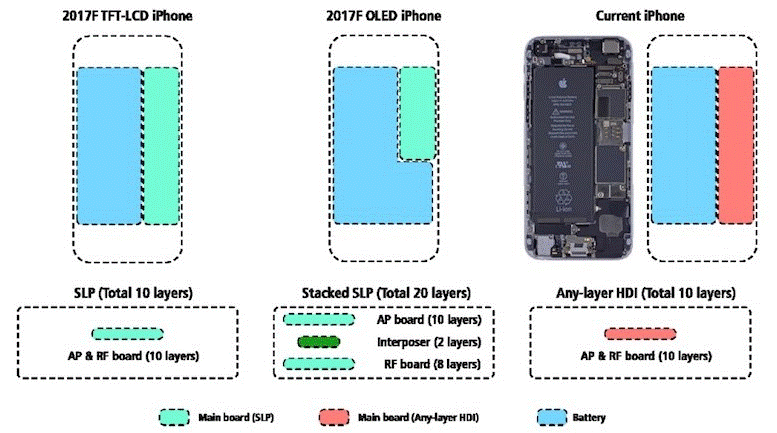|
J.P. Morgan – “Don’t Believe Reports of iPhone 8 Delays”
July 31, 2017 J.P. Morgan Apple analyst Rod Hall forecasts that Apple’s upcoming fiscal Q3 and beyond, including predictions for the iPhone 8 launch this fall. Notably, the firm combats recent reports that the flagship OLED model would be delayed, claiming that it expects the model to arrive at least in limited quantities in time for the usual September launch. J.P. Morgan is reducing its prediction for shipments of the upcoming flagship device, which it refers to as the “iPhone Pro”; due to what it expects will be “a slower production start for the flagship OLED phone.” It doesn’t however; think recent reports of delays will cause any material delay for the actual launch of the device apart from perhaps constrained supply as usual in the first month or two. …we do not believe that Apple’s production schedule is still changing materially with most current delay reports simply dated reverberations of decisions Apple made back in the spring. We expect a small amount of late September EMS output for the Pro model and then ramping production through October with target output levels achieved in late October/early November To reflect a slower start for production of the OLED iPhone model, J.P. Morgan adjusted its forecast for the device from 9m units in September to ~2m units for September. It notes, however, that it will also increase its Y18 unit forecasts “by about the same amount to reflect time-shifted demand.” Our total iPhone shipments estimate for FQ4 is now 42.2m, reduced from our prior 49.5m forecast. Our FY18 iPhone shipments estimate is now 270.2m, up from our previous estimate of 262.9m… The report from J.P. Morgan adds to the many recent reports that the new flagship iPhones could debut with a higher average selling price. The firm is once again increasing its expectation for the average selling price by $100 to $1,100, noting that it believes “production costs are slightly higher than we had originally anticipated.” It also thinks the higher average selling price will be a “critical demand control variable for a new tier of iPhone” and that “Apple’s pricing strategy is likely to be aimed at spreading this replacement cycle over two years given totally new product categories like AR are likely still a few years out.” Some analysts have even predicted that the cost of the device could top $1000, which was first reported by Fast Company. Currently, the entry price for an iPhone 7 is $650. UBS analysts summarize this trend in one simple chart in a note recently distributed to clients: UBS analyst Steven Milunovich believes the redesigned iPhone expected to launch this fall will be priced at $850 to $900 in a separate note. "The question then becomes how the non-OLED models are priced. Will there be enough people willing to pay $650-770 for incremental innovation? Apple could be forced to make a difficult pricing decision, especially in markets like China where the $400-500 premium handset market is increasingly competitive," Milunovich writes. UBS analysts believe, based on industry checks, that the less-exciting iPhone models could launch before the redesigned iPhone and will go into production first. "Nonetheless, our checks suggest the OLED iPhone 8 assembly service procurement schedule has been planned for a ramp up in October 2017. This is not a delay but planned. We believe this could be due to the time needed to finalize many innovative new designs. Two other new models could start ramping up production from August 2017. These two models might become available ahead of the OLED iPhone8, but we have no visibility on whether Apple will announce all three models at the same time, even though we believe it makes sense to do so." Figure 1: iPhone 8 – Price Increase on Key Components vs. iPhone 7+ Source: UBS, Fomalhault
Even though it is still months removed from the upcoming iPhone 8 release, rumors involving the iPhone 9 have already started trickling in. The Korea Economic Daily relays that Apple has tapped LG to be the exclusive battery supplier for the iPhone 9. As the report notes, Apple's decision here represents a slight departure from the company's traditional operating strategy. Apple often likes to use a multitude of suppliers for various iPhone components, a strategy that helps it secure favorable pricing while also offering a hedge against any unforeseen technical or manufacturing hurdles. It's perhaps possible that the battery performance and design LG is working on is sufficiently impressive to convince Apple to go all-in with just one supplier. The report adds that the battery on the iPhone 9 will be L-shaped, a design said to have been made in the interest of optimizing internal space, a feat which becomes increasingly more of a challenge with each successive iPhone release. The battery that LG Chem will supply to the iPhone 9 is an “L-shape” battery, which is bent to the right at the bottom. Apple has customized it to take advantage of the space on the bottom right of the iPhone that has evolved from the development of electronic component integration technology. The report adds that LG has already “invested hundreds of billions of won” into revamping its facilities ahead of mass production, which is said to kick off sometime in early 2018. There are also rumblings that the battery on Apple's flagship iPhone 8 may also feature an L-shaped battery. Originally brought to the surface this past February, analyst Ming-Chi Kuo said that the iPhone 8 would incorporate a stacked logic board design that will allow for a larger battery, as evidenced by the illustration below. Figure 2: Battery for iPhone 8 vs. iPhone 7 Source: LG Chem
|
Vertical Divider
|
|
Contact Us
|
Barry Young
|


